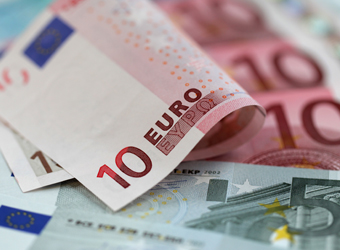The euro is trading at levels not seen since January 2015 and has registered its best run in five years as dollar weakens and the eurozone economy starts to gradually improve.
On Tuesday, the euro reached a two-and-a-half year high against the dollar, trading just above $1.18 as investors look to move away from the risks surrounding the euro zone and focus on stronger fundamentals driving growth in the region.
“The euro is benefiting from a substantial compression in spreads, allied to removal of European political risks, the latter benefiting from the passage of the French election. The German election has moved to be seen almost as a non-event,” Jeremy Stretch, head of G10 FX strategy at CIBC Capital Markets, told CNBC via email.
Stretch further explained that improved euro fundamentals, such as annual growth reaching levels not seen in six years, has allowed the European Central Bank to think about tightening its ultra-loose monetary policy. “The prospect of an easing in bond-buying will start to arrest the aggressive expansion in the ECB’s balance sheet.”
The euro is on course for its best year since 2003 when it ended the year up more than 12 percent. The currency has risen nearly 13 percent since the start of 2017 and has also posted its fifth monthly rise in a row, logging its best run in five years.
Since the start of the year, with the exception of February, the euro has ended the month on a positive note.
Here are the monthly runs for the euro since the start of the year:
- January – 3.3 percent
- February – Down 1.8 percent
- March – Nearly 1 percent
- April – 2.13 percent
- May – 3.15 percent
- June – 1.9 percent
- July – 3.5 percent
Dollar weakness or euro strength?
While analysts have attributed the strength in the euro to stronger fundamentals and improvement in the economy as well as the ECB readjusting its inflation target, some believe it is also down to the dollar weakness.
“While euro fundamentals and rate spreads are encouraging of course, the correction in euro/dollar is also a function of the collapse in dollar sentiment. The paring of U.S. rate expectations and ongoing U.S. political uncertainty add to the euro momentum,” CIBC’s Stretch added.
The U.S. dollar is holding close to a 14-month low as investors add to bets that political turmoil in Washington may hit prospects of another Federal Reserve rate hike this year. Uncertainty around President Donald Trump’s policies and its impact on the larger economy continue to weigh on the greenback.
“The euro move above $1.18 has been more of a story about dollar weakness than euro strength,” Samir Sheldenkar, partner at Harmonic Capital, told CNBC via email.
“Political concerns have clearly had an impact on the dollar as it becomes harder to see supportive policy being enacted from a White House in disarray. This has been compounded by economic data suggesting U.S. strength is perhaps not as robust as many thought earlier in the year.”
Could the euro head higher?
Sheldenkar predicts that with the euro still undervalued a currency move towards $1.20 in the short-term and above $1.30 in the long-term can be seen. “This would be more likely if the ECB does begin to taper QE or consider rate rises later in the year, or the Fed slows down their rate hiking cycle.”
Meanwhile, CIBC’s Stretch forecasts the euro heading towards $1.29 over the next 18 months if the ECB adjusts the deposit rate back to zero ahead of the end of bond-buying.
However, strategists at Morgan Stanley have warned that euro strength could weigh on European earnings. In a note to clients, Morgan Stanley strategists wrote that a 10 percent rise in euro could knock 5 to 8 percent off euro zone earnings and shave about 0.7 percentage points off regional gross domestic product (GDP) growth a year later as exports fall.
According to Thomson Reuters estimates, European earnings are expected to increase 12.4 percent in 2017.
Source: CNBC
